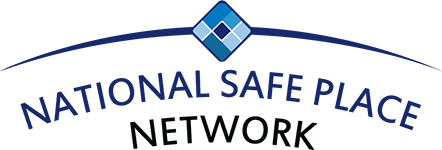National Slavery and Human Trafficking Prevention Month
Written by: Susan Harmon, Director of Safe Place National Operations
By now you have probably seen, heard or read a great deal about human trafficking - what it is, who the victims are and where they are. Here are just a few statistics NSPN would like to share with you:
- In 2014, an estimated 1 out of 6 endangered runaways reported to the National Center for Missing and Exploited Children were likely child sex trafficking victims. Of those, 68% were in the care of social services or foster care when they ran.
- The Polaris Project reports that there is no official estimate of the total number of human trafficking victims in the U.S.
- Polaris estimates that the total number of victims nationally reaches into the hundreds of thousands when estimates of both adults and minors and sex trafficking and labor trafficking are aggregated.
- According to DoSomething.org:
- The average age a teen enters the sex trade in the U.S. is 12 to 14-year-old. Many victims are runaway girls who were sexually abused as children.
- California harbors 3 of the FBI’s 13 highest child sex trafficking areas on the nation: Los Angeles, San Francisco and San Diego.
- The National Human Trafficking Hotline receives more calls from Texas than any other state in the US. 15% of those calls are from the Dallas-Fort Worth area.
How does Safe Place fit into this issue and how can it help youth that are being trafficked or at risk for trafficking? Safe Place is a national youth outreach and runaway prevention program with a presence in over 1,500 communities in 37 states. National Safe Place Network partners with licensed local agencies to provide quality and consistent Safe Place outreach services making the Safe Place logo a familiar and recognizable symbol for youth in crisis situations needing immediate help and safety. The national safety net that has grown across the United States since the Safe Place program started in 1983 has helped over 329,000 youth at Safe Place sites or by phone. The Safe Place TXT 4 HELP initiative has had almost 54,000 texting situations, including 2,904 interactive texting incidents. Almost 13.5 million youth have heard a presentation about Safe Place and local services available for youth and families in crisis!
Safe Place can connect youth in need to immediate help and supportive resources:
- Safe Place is a national program – a young person in an unfamiliar place may recognize the Safe Place logo from “home” and utilize a site to get help.
- TXT 4 HELP can also be a way for youth to access help. Text the word “safe” and a physical address including street address, city and state to 69866 and local resources will be sent. Interactive texting with a professional counselor is also available.
- National anti-trafficking groups can disseminate information about Safe Place and TXT 4 HELP
- Local/national agencies may partner with transit associations that have electronic message boards inside their vehicles and post a Safe Place message.
- Promote Safe Place/TXT 4 HELP:
- Bus stations, 24 hour eateries like Waffle House, etc.
- Truck stops and major trucking companies
- Law enforcement/state patrols covering interstate highways
- State highway departments/at rest areas
- Businesses along interstates and known trafficking routes




